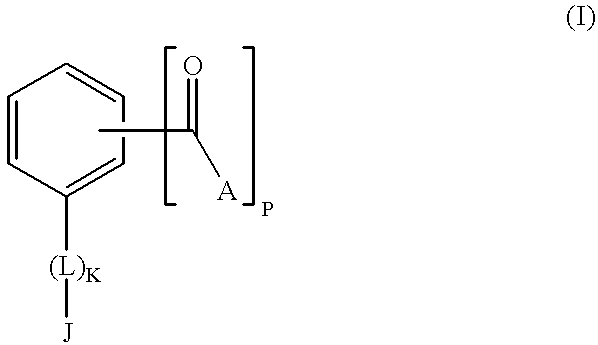Compounds and methods of use to treat infectious diseases
a technology of infectious diseases and compounds, applied in the field of compounds, can solve the problems of inability to treat infectious diseases, inability to provide consecutive lysine to functional nls peptides, and inability to provide lysine,
- Summary
- Abstract
- Description
- Claims
- Application Information
AI Technical Summary
Benefits of technology
Problems solved by technology
Method used
Image
Examples
Embodiment Construction
[0076] 5.1 The Compounds and Methods of Their Synthesis
[0077] The present invention encompasses a class of alkyl aryl carbonyl compounds that forms stable, but preferably reversible, and most preferably reversible covalent interactions with one or more basic amino acid residues, wherein such basic amino acid residues are a part of a nuclear localization signal (NLS). The stable covalent interaction results in the inhibition or neutralization of the nuclear localization activity of the NLS.
[0078] Two structural features are involved in conferring such capabilities of a compound of the invention: (a) a moiety comprising at least one carbonyl group that reacts with the side chains of basic amino acid residues in the target protein, i.e., the reactive group; and (b) a second moiety, i.e., the targetting group, that interacts with a specific docking site and determines the specificity of the compound for different NLS.
[0079] Although the reactive group(s) of the compounds of the inventio...
PUM
| Property | Measurement | Unit |
|---|---|---|
| concentrations | aaaaa | aaaaa |
| temperature | aaaaa | aaaaa |
| volume | aaaaa | aaaaa |
Abstract
Description
Claims
Application Information
 Login to View More
Login to View More - R&D
- Intellectual Property
- Life Sciences
- Materials
- Tech Scout
- Unparalleled Data Quality
- Higher Quality Content
- 60% Fewer Hallucinations
Browse by: Latest US Patents, China's latest patents, Technical Efficacy Thesaurus, Application Domain, Technology Topic, Popular Technical Reports.
© 2025 PatSnap. All rights reserved.Legal|Privacy policy|Modern Slavery Act Transparency Statement|Sitemap|About US| Contact US: help@patsnap.com



